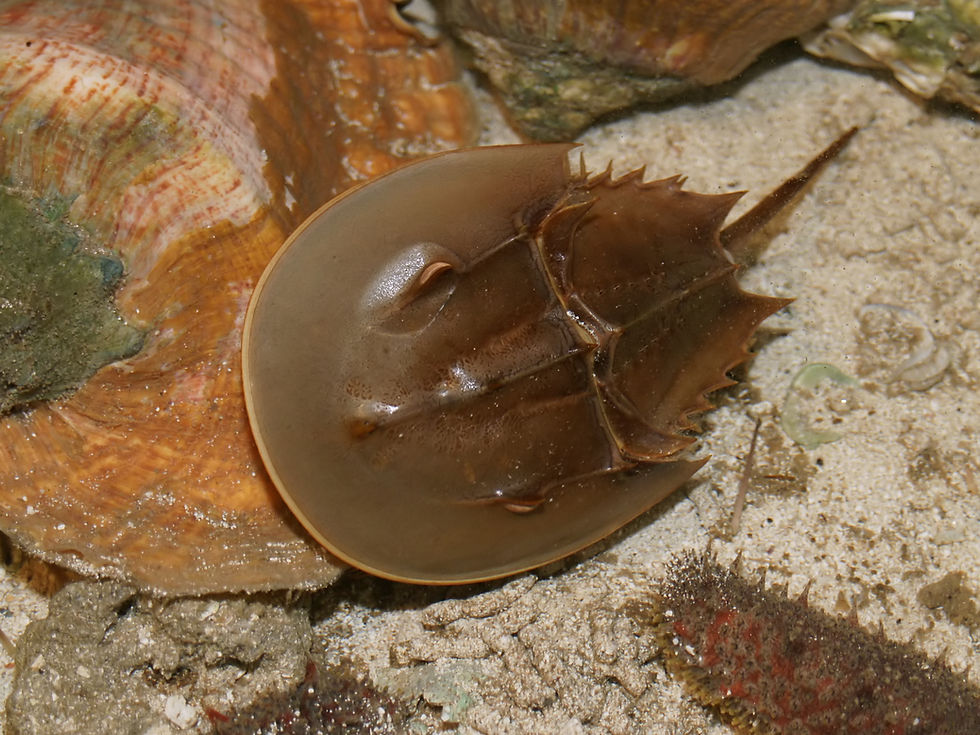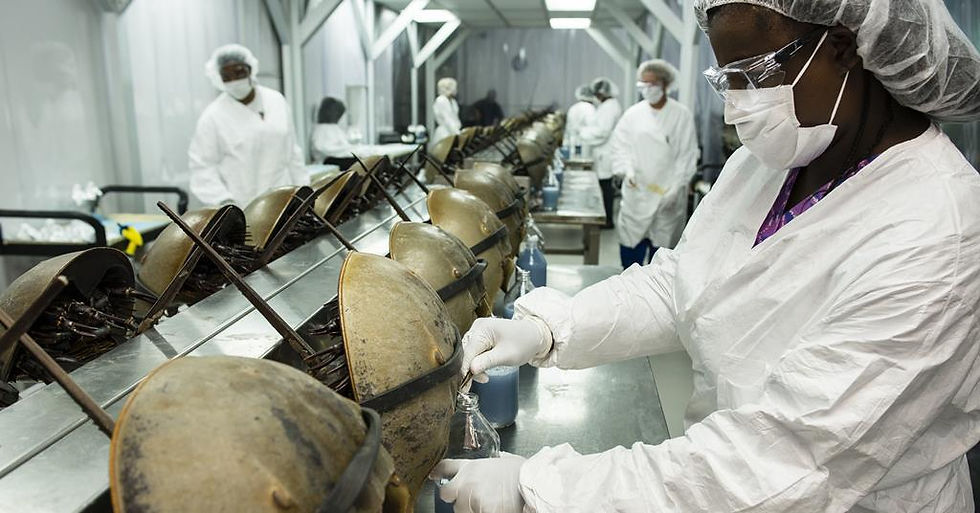The Horseshoe Crab: The Invincible Animal
- Anish Mehta
- Aug 1
- 2 min read
The protagonist of many evolution memes, the Horseshoe crab (Limulus polyphemus) has remained relatively unchanged for hundreds of millions of years. Although it is called a crab, it is actually not a true crab or even a crustacean but a unique species which is the only surviving member of the order Xiphosura. They are in the family Chelicerata which is related to arachnids such as spiders and scorpions.

The first members of this ancient species appeared in the fossil record 300 million years ago. Ever since then, they have gone through virtually very little change. They have survived through numerous mass extinctions and still managed to stay around which is quite an impressive feat. For a lineage that is older than the dinosaurs, they have managed to reach a perfect balance between the rapid ever changing advancements of evolution and defy the need to change or adapt to new environments and stay the same regardless of what environmental or ecological changes occur around them.

Though being a pretty simple and robust creature has its upsides, they still have a few ancient quirks. For example, they have to swim upside down due to the large carapace that covers their bodies. They have a pair of eyes at the front of the head which can see in the ultraviolet light range and 6 pairs of legs, though only 5 are used for walking.
Horseshoe crabs live in a wide range of habitats, surviving in estuaries and coastal Atlantic regions. They feed off marine worms, clams and other mollusks. In high tides after sundown during the summer months, millions of horseshoe crabs ascend to the beaches on the coasts of North America and Asia to spawn. A female can lay up to as many as 4000 eggs in one night.
Recent medical advancements over the last few decades can actually be attributed to these ancient creatures. Horseshoe crab blood contains a unique enzyme called limulus amebocyte lysate, or LAL. It causes the blood to coagulate when exposed to bacterial endotoxins, which can be deadly.

Biomedical companies use LAL to test medicines, vaccines, implants, and more for endotoxins. It is how they ensure that medical equipment is safe for people. This incredible species is an example of when a creature has reached the “pinnacle” of evolution and adaptation and we should not be surprised if they are around for another 300 million years.



Comments